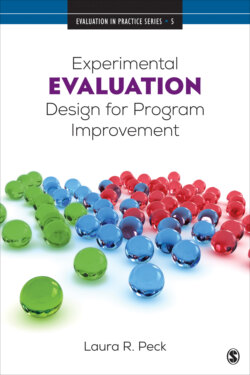Читать книгу Experimental Evaluation Design for Program Improvement - Laura R. Peck - Страница 11
Box 1.1 Definition and Origins of the Term “Black Box” in Program Evaluation
ОглавлениеIn the field of program evaluation, “black box” refers to how some impact evaluations are perceived to consider the program and its implementation. It is possible to evaluate the impact of a program without knowing much at all about what the program is. In that circumstance, the program itself is considered a black box, an unknown.
Perhaps the first published reference to black box appeared in a 1993 Institute for Research on Poverty discussion paper, “Prying the Lid from the Black Box” by David Greenberg, Robert Meyer, and Michael Wiseman (although two of these authors credit Larry Orr for using the black box term before then). This paper seems to have evolved and was published in 1994 as “Multisite Employment and Training Program Evaluation: A Tale of Three Studies” by the same trio, with follow-up papers in the decade that followed (e.g., Greenberg Meyer, Michalopoulos, & Wiseman, 2003).
In the ensuing two decades, the term—as in getting inside the black box—has become associated with the idea of understanding the details of a program’s operations. A special section of the American Journal of Evaluation (volume 36, issue 4) titled ‘Unpacking the “Black Box” of Social Programs and Policies’ was dedicated to the methods; and three chapters of the 2016 New Directions for Evaluation (issue 152) considered “Inside the Black Box” evaluation designs and analyses.
Indeed, recent years have seen policymakers and funders—in government, private, and foundation sectors—desiring to learn more from their evaluations of health, education, and social programs. Although the ability to establish a program’s causal impact is an important contribution, it may be insufficient for those who immediately want to know what explains that treatment effect: Was the program effective primarily because of its quality case management? Did its use of technology in interacting with its participants drive impacts? Or are both aspects of the program essential to its effectiveness?
To answer these types of additional research questions about the key ingredients of an intervention’s success with the same degree of rigor requires a new perspective on the use of experimentals in practice. This book considers a range of impact evaluation questions, most importantly those questions that focus on the impact of specific aspects of a program. It explores how a variety of experimental evaluation design options can provide the answers to these questions and suggests opportunities for experiments to be applied in more varied settings and focused on program improvement efforts.
